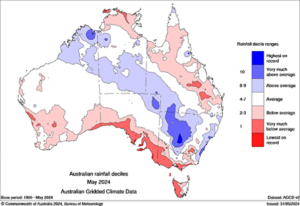19 August 2024
The August 2024 issue of Technical Review is now available online and it’s another bumper issue! Read the latest AWRI publications on a wide range of topics including crown gall, grapevine viruses, smoke taint, and the future of wine packaging. Browse curated grape and wine literature to keep in touch with recent findings and understand how they might be applied in your business.
Australian winemakers and grapegrowers who pay the Wine Grapes or Grape Research levies can log in to read abstracts and order the latest non-open access journal articles from the AWRI Library, free of charge. Register a new login or use the forgotten password link to reset your password.
We welcome your feedback on Technical Review and you can reach us at infoservices@awri.com.au.
AWRI publications
- Accurate measurement of sulfhydryls and TCEP-releasable sulfhydryls in the liquid phase of wine that contribute to ‘reductive’ aromas using LC-MS/MS [Read full-text online] Heliyon
- Amelioration of smoke taint in wine via addition of molecularly imprinted polymers during or after fermentation [Read abstract online] [Request copy from AWRI Library] Journal of Agricultural and Food Chemistry
- Ask the AWRI: Calcium oxalate deposits – kidney stones in wine? [Read full-text online] Australian & New Zealand Grapegrower & Winemaker
- Ask the AWRI: Crown gall in Australian vineyards [Read full-text online] Australian & New Zealand Grapegrower & Winemaker
- Bourboulenc [Read full-text online] Wine & Viticulture Journal
- Comparison of techniques for the quantitation of reductive aroma compounds in white wine: links to sensory analysis and Cu fractions [Read abstract online] [Request copy from AWRI Library] Journal of Agricultural and Food Chemistry
- Counoise [Read full-text online] Wine & Viticulture Journal
- Enhancing fermentation performance through the reutilisation of wine yeast lees [Read full-text online] OENO One
- Exogenous application of double-stranded RNA to reduce grapevine Pinot gris virus titre in in vitro grown Vitis vinifera [Read full-text online] Vitis
- How do Syrah winemakers from two different French regions conceptualise peppery wines? [Read full-text online] OENO One
- NOLO wine – laying the groundwork for big steps forward [Read full-text online] Wine & Viticulture Journal
- Prevalence of wildfire smoke exposure markers in oaked commercial wine. [Read full-text online] American Journal of Enology and Viticulture
- Recombination, admixture and genome instability shape the genomic landscape of Saccharomyces cerevisiae derived from spontaneous grape ferments [Read full-text online] PLOS Genetics
- Scale insect and mealybug pests – applying new technologies to long-standing problems [Read full-text online] Wine & Viticulture Journal
- Sensitivity of Plasmopara viticola to selected fungicide groups and the occurrence of the G143A mutant in Australian grapevine isolates [Read full-text online] Pest Management Science
- Smoky characters in wine: Distinctive flavor or taint? [Read abstract online] [Request copy from AWRI Library] Journal of Agricultural and Food Chemistry
- The future of wine packaging – A perspective [Read full-text online] Sustainable Agriculture and Environment
- The latest research on grapevine virology. Highlights of the 20th International Council for the Study of Virus and Virus-like Diseases of the Grapevine meeting [Read full-text online] Wine & Viticulture Journal
Oenology
- Astringency perception in a red wine context – a review [Read full-text online] OENO One
- Dimethyl sulfide (DMS) in Amarone wines: Influence of aging, withering, grape variety, and geographical origin [Read full-text online] Journal of Agricultural and Food Chemistry
- Lab equipment: New technologies for winery and vineyard analyses [Read full-text online] Wine Business Monthly
- Improvement and stabilization of red wine color [Book chapter] [Read abstract online] [Request copy from AWRI Library] Handbook on Natural Pigments in Food and Beverages
- Timing of leaf removal modulates tannin composition and the level of anthocyanins and methoxypyrazines in Pinot Noir grapes and wines [Read full-text online] Food Research International
- Worm-powered innovation cleans up winery wastewater [Request copy from AWRI Library] Australian & New Zealand Grapegrower & Winemaker
- Bio-dealcoholization of wines: Can yeast make lighter wines? [Read full-text online] Fermentation
- Australian consumer perception of non-alcoholic beer, white wine, red wine, and spirits [Read full-text online] International Journal of Gastronomy and Food Science
- Hydrogen sulfide formation in canned wines: Variation among can sources [Read full-text online] American Journal of Enology and Viticulture
- Plant-based alternative fining agents, with an option to avoid microplastic [Request copy from AWRI Library] Australian & New Zealand Grapegrower & Winemaker
Sustainability
- Case studies on sustainability-oriented innovations and smart farming technologies in the wine industry: A comparative analysis of pilots in Cyprus and Italy [Read full-text online] Agronomy
- Decarbonising wine: Wineries seek ‘clean and clever’ energy solutions [Read full-text online] New Zealand Winegrower
- Obtaining value from wine wastes: Paving the way for sustainable development [Read full-text online] Fermentation
Viticulture
- Ten years of hourly canopy temperature monitoring in cool climate vineyards of the Macedon Ranges [Request copy from AWRI Library] Australian & New Zealand Grapegrower & Winemaker
- Canopy and soil management strategies: Insights to overcome abiotic stresses in grapevine [eBook chapter] [Read abstract online] [Access copy from AWRI Library] Grapevine: From Origin to the Vineyard
- Crop forcing: an effective pruning technique to delay ripening to a cooler period [Request copy from AWRI Library] Wine & Viticulture Journal
- Addressing water stress and climate variability in the Mediterranean: Study of regulated deficit irrigation (RDI) and non-irrigation (NI) in Tempranillo and Cabernet Sauvignon (Vitis vinifera L.) [Read full-text online] Agriculture
- Redefining the glyphosate sector: Harmonizing inventiveness and sustainable practices for a better world [Read abstract online] [Request copy from AWRI Library] Journal of Agricultural and Food Chemistry
- Could varieties genetically related to Tempranillo behave better than it under drought conditions? [Read full-text online] Scientia Horticulturae
- Electric weed control: a new weed management option [Request copy from AWRI Library] Australian & New Zealand Grapegrower & Winemaker


